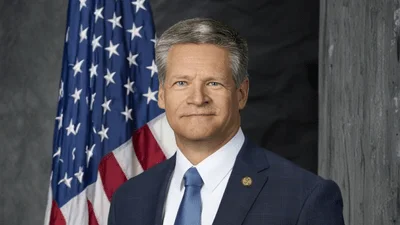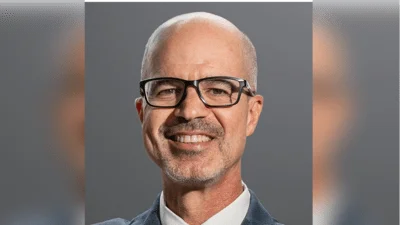The Congressional Record is a unique source of public documentation. It started in 1873, documenting nearly all the major and minor policies being discussed and debated.
“TEXT OF AMENDMENTS” mentioning the Department of Interior was published in the Senate section on pages S3303-S3305 on May 22, 2014.
The publication is reproduced in full below:
TEXT OF AMENDMENTS
SA 3227. Mr. REID (for Mrs. Feinstein (for herself and Ms. Murkowski)) proposed an amendment to the bill S. 2198, to direct the Secretary of the Interior, the Secretary of Commerce, the Secretary of Agriculture, and the Administrator of the Environmental Protection Agency to take actions to provide additional water supplies to the State of California due to drought, and for other purposes; as follows:
Strike all after the enacting clause and insert the following:
SECTION 1. SHORT TITLE; TABLE OF CONTENTS.
(a) Short Title.--This Act may be cited as the ``Emergency Drought Relief Act of 2014''.
(b) Table of Contents.--The table of contents of this Act is as follows:
Sec. 1. Short title; table of contents.
Sec. 2. Findings.
Sec. 3. Definitions.
Sec. 4. Emergency projects.
Sec. 5. Emergency environmental reviews.
Sec. 6. State revolving funds.
Sec. 7. Effect on State laws.
Sec. 8. Termination of authorities.
SEC. 2. FINDINGS.
Congress finds that--
(1) as established in the Proclamation of a State of Emergency issued by the Governor of the State on January 17, 2014, the State is experiencing record dry conditions;
(2) extremely dry conditions have persisted in the State since 2012, and the drought conditions are likely to persist into the future;
(3) the water supplies of the State are at record-low levels, as indicated by a statewide average snowpack of 12 percent of the normal average for winter as of February 1, 2014, and the fact that all major Central Valley Project reservoir levels are at or below 50 percent of the capacity of the reservoirs as of April 1, 2014;
(4) the 2013-2014 drought constitutes a serious emergency posing immediate and severe risks to human life and safety and to the environment throughout the State;
(5) the emergency requires--
(A) immediate and credible action that respects the complexity of the water system of the State and the importance of the water system to the entire State; and
(B) policies that do not pit stakeholders against one another, which history has shown only leads to costly litigation that benefits no one and prevents any real solutions;
(6) Federal law (including regulations) directly authorizes expedited decisionmaking procedures and environmental and public review procedures to enable timely and appropriate implementation of actions to respond to such a type and severity of emergency; and
(7) the serious emergency posed by the 2013-2014 drought in the State fully satisfies the conditions necessary for the exercise of emergency decisionmaking, analytical, and public review requirements under--
(A) the Endangered Species Act of 1973 (16 U.S.C. 1531 et seq.);
(B) the National Environmental Policy Act of 1969 (42 U.S.C. 4321 et seq.);
(C) water control management procedures of the Corps of Engineers described in section 222.5 of title 33, Code of Federal Regulations (including successor regulations); and
(D) the Reclamation States Emergency Drought Relief Act of 1991 (Public Law 102-250; 106 Stat. 53).
SEC. 3. DEFINITIONS.
In this Act:
(1) Central valley project.--The term ``Central Valley Project'' has the meaning given the term in section 3403 of the Central Valley Project Improvement Act (106 Stat. 4707).
(2) Klamath project.--The term ``Klamath Project'' means the Bureau of Reclamation project in the States of California and Oregon, as authorized under the Act of June 17, 1902 (32 Stat. 388, chapter 1093).
(3) Reclamation project.--The term ``Reclamation Project'' means a project constructed pursuant to the authorities of the reclamation laws and whose facilities are wholly or partially located in the State.
(4) Secretaries.--The term ``Secretaries'' means--
(A) the Administrator of the Environmental Protection Agency;
(B) the Secretary of Agriculture;
(C) the Secretary of Commerce; and
(D) the Secretary of the Interior.
(5) State.--The term ``State'' means the State of California.
(6) State water project.--The term ``State Water Project'' means the water project described by California Water Code section 11550 et seq., and operated by the California Department of Water Resources.
SEC. 4. EMERGENCY PROJECTS.
(a) Water Supplies.--
(1) In general.--In response to the declaration of a state of drought emergency by the Governor of the State, the Secretaries shall provide the maximum quantity of water supplies possible to Central Valley Project agricultural, municipal and industrial, and refuge service and repayment contractors, State Water Project contractors, and any other locality or municipality in the State, by approving, consistent with applicable laws (including regulations), projects and operations to provide additional water supplies as quickly as possible based on available information to address the emergency conditions.
(2) Application.--Paragraph (1) applies to projects or operations involving the Klamath Project if the projects or operations would benefit Federal water contractors in the State.
(b) Limitation.--Nothing in this section allows agencies to approve projects--
(1) that would otherwise require congressional authorization; or
(2) without following procedures required by applicable law.
(c) Administration.--In carrying out subsection (a), the Secretaries shall, consistent with applicable laws (including regulations)--
(1) authorize and implement actions to ensure that the Delta Cross Channel Gates shall remain open to the greatest extent possible, timed to maximize the peak flood tide period and provide water supply and water quality benefits for the duration of the drought emergency declaration of the State, consistent with operational criteria and monitoring criteria developed pursuant to the California State Water Resources Control Board's Order Approving a Temporary Urgency Change in License and Permit Terms in Response to Drought Conditions, effective January 31, 2014, or a successor order;
(2)(A) collect data associated with the operation of the Delta Cross Channel Gates described in paragraph (1) and the impact of the operation on species listed as threatened or endangered under the Endangered Species Act of 1973 (16 U.S.C. 1531 et seq.), water quality, and water supply; and
(B) after assessing the data described in subparagraph (A), require the Director of the National Marine Fisheries Service to recommend revisions to operations of the Central Valley Project and the California State Water Project, including, if appropriate, the reasonable and prudent alternatives contained in the biological opinion issued by the National Marine Fisheries Service on June 4, 2009, that are likely to produce fishery, water quality, and water supply benefits;
(3)(A) implement turbidity control strategies that allow for increased water deliveries while avoiding jeopardy to adult delta smelt (Hypomesus transpacificus) due to entrainment at Central Valley Project and State Water Project pumping plants; and
(B) manage reverse flow in the Old and Middle Rivers as prescribed by the biological opinions issued by the United States Fish and Wildlife Service on December 15, 2008, for Delta smelt and by the National Marine Fisheries Service on June 4, 2009, for salmonids, to minimize water supply reductions for the Central Valley Project and the State Water Project;
(4) adopt a 1:1 inflow to export ratio for the increased flow of the San Joaquin River, as measured as a 3-day running average at Vernalis during the period from April 1 through May 31, resulting from voluntary transfers and exchanges of water supplies, among other purposes;
(5) issue all necessary permit decisions under the authority of the Secretaries within 30 days of receiving a completed application by the State to place and use temporary barriers or operable gates in Delta channels to improve water quantity and quality for State Water Project and Central Valley Project South of Delta water contractors and other water users, which barriers or gates should provide benefits for species protection and in-Delta water user water quality and shall be designed such that formal consultations under section 7 of the Endangered Species Act of 1973 (16 U.S.C. 1536) would not be necessary;
(6)(A) require the Director of the United States Fish and Wildlife Service and the Commissioner of the Bureau of Reclamation to complete all requirements under the National Environmental Policy Act of 1969 (42 U.S.C. 4321 et seq.) and the Endangered Species Act of 1973 (16 U.S.C. 1531 et seq.) necessary to make final permit decisions on water transfer requests associated with voluntarily fallowing nonpermanent crops in the State, within 30 days of receiving such a request; and
(B) require the Director of the United States Fish and Wildlife Service to allow any water transfer request associated with fallowing to maximize the quantity of water supplies available for nonhabitat uses as long as the fallowing and associated water transfer are in compliance with applicable Federal laws (including regulations);
(7) participate in, issue grants, or otherwise provide funding for, as soon as practicable after the date of enactment of this Act, under existing authority available to the Secretary of the Interior, pilot projects to increase water in reservoirs in regional river basins experiencing extreme, exceptional, or sustained drought that have a direct impact on the water supply of the State, including the Colorado River Basin, provided that any participation, grant, or funding by the Secretary with respect to the Upper Division shall be with or to the respective State;
(8) maintain all rescheduled water supplies held in the San Luis Reservoir and Millerton Reservoir for all water users for delivery in the immediately following contract water year unless precluded by reservoir storage capacity limitations;
(9) to the maximum extent possible based on the availability of water and without causing land subsidence or violating water quality standards--
(A) meet the contract water supply needs of Central Valley Project refuges through the improvement or installation of water conservation measures, water conveyance facilities, and wells to use groundwater resources, which activities may be accomplished by using funding made available under the Water Assistance Program or the WaterSMART program of the Department of the Interior; and
(B) make a quantity of Central Valley Project surface water obtained from the measures implemented under subparagraph (A) available to Central Valley Project contractors;
(10) in coordination with the Secretary of Agriculture, enter into an agreement with the National Academy of Sciences to conduct a comprehensive study, to be completed not later than 1 year after the date of enactment of this Act, on the effectiveness and environmental impacts of saltcedar biological control efforts on increasing water supplies and improving riparian habitats of the Colorado River and its principal tributaries, in the State and elsewhere;
(11) make any WaterSMART grant funding allocated to the State available on a priority and expedited basis for projects in the State that--
(A) provide emergency drinking and municipal water supplies to localities in a quantity necessary to meet minimum public health and safety needs;
(B) prevent the loss of permanent crops;
(C) minimize economic losses resulting from drought conditions; or
(D) provide innovative water conservation tools and technology for agriculture and urban water use that can have immediate water supply benefits;
(12) implement offsite upstream projects in the Delta and upstream Sacramento River and San Joaquin basins, in coordination with the California Department of Water Resources and the California Department of Fish and Wildlife, that offset the effects on species listed as threatened or endangered under the Endangered Species Act of 1973 (16 U.S.C. 1531 et seq.) due to actions taken under this Act; and
(13) use all available scientific tools to identify any changes to real-time operations of Bureau of Reclamation, State and local water projects that could result in the availability of additional water supplies.
(d) Other Agencies.--To the extent that a Federal agency other than agencies headed by the Secretaries has a role in approving projects described in subsections (a) and (c), this section shall apply to those Federal agencies.
(e) Accelerated Project Decision and Elevation.--
(1) In general.--Upon the request of the State, the heads of Federal agencies shall use the expedited procedures under this subsection to make final decisions relating to a Federal project or operation to provide additional water supplies or address emergency drought conditions pursuant to subsections
(a) and (c).
(2) Request for resolution.--
(A) In general.--Upon the request of the State, the head of an agency referred to in subsection (a), or the head of another Federal agency responsible for carrying out a review of a project, as applicable, the Secretary of the Interior shall convene a final project decision meeting with the heads of all relevant Federal agencies to decide whether to approve a project to provide emergency water supplies.
(B) Meeting.--The Secretary of the Interior shall convene a meeting requested under subparagraph (A) not later than 7 days after receiving the meeting request.
(3) Notification.--Upon receipt of a request for a meeting under this subsection, the Secretary of the Interior shall notify the heads of all relevant Federal agencies of the request, including the project to be reviewed and the date for the meeting.
(4) Decision.--Not later than 10 days after the date on which a meeting is requested under paragraph (2), the head of the relevant Federal agency shall issue a final decision on the project.
(5) Meeting convened by secretary.--The Secretary of the Interior may convene a final project decision meeting under this subsection at any time, at the discretion of the Secretary, regardless of whether a meeting is requested under paragraph (2).
SEC. 5. EMERGENCY ENVIRONMENTAL REVIEWS.
To minimize the time spent carrying out environmental reviews and to deliver water quickly that is needed to address emergency drought conditions in the State, the head of each applicable Federal agency shall, in carrying out this Act, consult with the Council on Environmental Quality in accordance with section 1506.11 of title 40, Code of Federal Regulations (including successor regulations) to develop alternative arrangements to comply with the National Environmental Policy Act of 1969 (42 U.S.C. 4321 et seq.) during the emergency.
SEC. 6. STATE REVOLVING FUNDS.
(a) In General.--The Administrator of the Environmental Protection Agency, in allocating amounts for each of the fiscal years during which the emergency drought declaration of the State is in force to State water pollution control revolving funds established under title VI of the Federal Water Pollution Control Act (33 U.S.C. 1381 et seq.) and the State drinking water treatment revolving loan funds established under section 1452 of the Safe Drinking Water Act
(42 U.S.C. 300j-12), shall, for those projects that are eligible to receive assistance under section 603 of the Federal Water Pollution Control Act (33 U.S.C. 1383) or section 1452(a)(2) of the Safe Drinking Water Act (42 U.S.C. 300j-12(a)(2)), respectively, that the State determines will provide additional water supplies most expeditiously to areas that are at risk of having an inadequate supply of water for public health and safety purposes or to improve resiliency to drought--
(1) require the State to review and prioritize funding for such projects;
(2) issue a determination of waivers within 30 days of the conclusion of the informal public comment period pursuant to section 436(c) of title IV of division G of Public Law 113-76; and
(3) authorize, at the request of the State, 40-year financing for assistance under section 603(d)(2) of the Federal Water Pollution Control Act (33 U.S.C. 1383(d)(2)) or section 1452(f)(2) of the Safe Drinking Water Act (42 U.S.C. 300j-12(f)(2)).
(b) Effect of Section.--Nothing in this section authorizes the Administrator of the Environmental Protection Agency to modify any funding allocation, funding criteria, or other requirement relating to State water pollution control revolving funds established under title VI of the Federal Water Pollution Control Act (33 U.S.C. 1381 et seq.) and the State drinking water treatment revolving loan funds established under section 1452 of the Safe Drinking Water Act
(42 U.S.C. 300j-12) for any other State.
SEC. 7. EFFECT ON STATE LAWS.
Nothing in this Act preempts any State law in effect on the date of enactment of this Act, including area of origin and other water rights protections.
SEC. 8. TERMINATION OF AUTHORITIES.
The authorities under section 4(a), paragraphs (1) through
(6) of section 4(c), paragraphs (8) and (9) of section 4(c), paragraphs (11) through (13) of section 4(c), section 5, and section 6 permanently expire on the date on which the Governor of the State suspends the state of drought emergency declaration.
______
SA 3228. Mr. REID (for Mrs. Feinstein (for herself and Ms. Murkowski)) proposed an amendment to the bill S. 2198, to direct the Secretary of the Interior, the Secretary of Commerce, the Secretary of Agriculture, and the Administrator of the Environmental Protection Agency to take actions to provide additional water supplies to the State of California due to drought, and for other purposes; as follows:
Amend the title to read as follows: ``To direct the Secretary of the Interior, the Secretary of Commerce, the Secretary of Agriculture, and the Administrator of the Environmental Protection Agency to take actions to provide additional water supplies to the State of California due to drought, and for other purposes.''.
____________________








